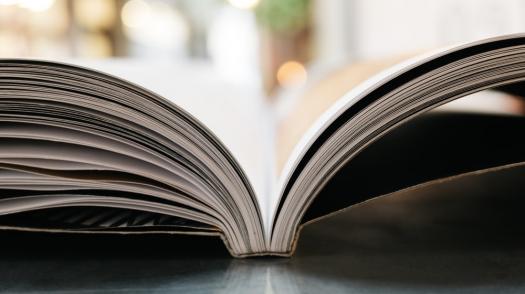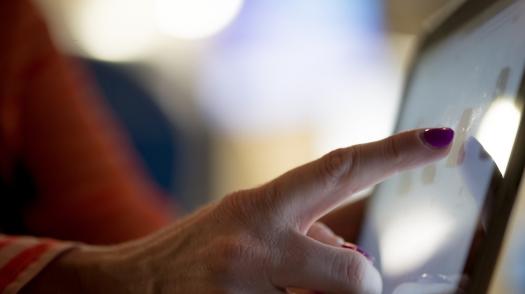There are a number of people who might be on-hand to support you when your child is back at home. All of these professionals will bring different skills to the table and contribute to your child’s wellbeing.
But it can be hard for parents to know where to start in accessing these services.1 Some parents talk about how strange and disorienting it can be to have lots of new faces around the home. If you and your child are visiting different professionals, this may be just as bewildering for the family.2
Community services
Moving over to community services can be particularly difficult for parents, particularly if they have become used to a more intensive programme elsewhere.3 A return to the community must be carefully managed, and there are a number of areas of strain.
There are a variety of community services – such as nursing, psychology and therapy – which are provided by various organisations. These may be provided privately, through your local authority, or through a charitable organisation.
Building a team around your child
Even if you and your family aren’t accessing community services, there are still different people you may come into contact with. These different people are like members of a team around your child.4
To take this further, you might think of yourself, a parent, as captain of that team. You will be the only person who sees everyone in the process, from the very first doctors to the physiotherapists when you’re at home.5
Many parents say they get a little tired of repeating the same information over and over to different professionals. You might find it easier to get this information written down. You can then share this with different people, or familiarise yourself with it so you can share it verbally.
Education
Teachers
If your child is able to return to mainstream education, teachers will form part of the team around them.
We can look back at some of the difficulties associated with acquired brain injury:
And it’s easy to see why the classroom might be a difficult place for a child. There is a danger that their difficulties may be misunderstood.10 But this can be greatly helped along if teachers are kept informed and up-to-date.11
Some parents invite teachers to their child’s discharge planning meeting, if only so they hear about the plans for a child’s future ‘straight from the horse’s mouth’.12
Special Educational Needs coordinators
Schools are required by law to have one of these people.13 They may be a teacher who has taken on this role on top of their existing duties.
You might hear them referred to as SENCOs. Crucially, SENCOs are very much involved in the special educational needs process. This is the process whereby your child’s educational needs are assessed.
Medical and care staff
GPs (general practitioners)
We all know what a doctor is. But GPs often act as a kind of gatekeeper to other services.
They may be able to refer your child to other people for specialist advice or treatment. Your GP should have been notified about the discharge planning meeting when your child left hospital.
Consultants
These are senior doctors. They are specialists in their chosen field, and will usually have a high level of experience in it. Your child may be referred to a consultant paediatrician. The ‘paediatrician’ part simply means they specialise in children’s health.
Neurosurgeons
These are surgeons with a specialism in working with the brain.
Social workers
A social worker may coordinate discharge planning, and may refer children to services in the community and answer questions about any issues that come up.
A social worker might help steer a family towards appropriate services in the community after discharge from hospital.
You’ll have noticed the word ‘may’ in this description. Some families may not be eligible for help from a social worker. And the work a social worker does will very much depend on individual circumstances. They will be employed by your local authority (your city, county, or borough council, for instance).
Physiotherapists14
Physiotherapists use a wide range of techniques to improve children’s movement, comfort and sense of their own independence. They might help a child through a series of exercises to encourage greater movement and flexibility.
The role of physiotherapists and all following therapists is explained on our Therapies after a brain injury page.
Occupational therapists
Occupation therapists help children perform everyday activities, some of which they may have lost the ability to do because of their injury.15 These might include dressing or cleaning teeth. It’s about building on the child’s ‘life skills’ and these therapists talk about enhancing someone’s ‘participation’ in the world around them.
Speech and language therapists
Speech and language therapists might help children with their speech and communication as part of a community service. Many children with acquired brain injury have communication difficulties of some kind.16 Better communication boosts confidence and gives children more ‘say’ in their lives in a very literal sense.
Psychologists
Much of a psychologist’s work is in talking things through with children. This may be intended to help children cope with the procedures they’re going through or help them with stress or emotional difficulties.17
Educational psychologists
Sometimes called ‘EPs’, these professionals look at the way children learn and their individual strengths and difficulties. As with all children, the broad aim for those with ABI is to support them if they’re experiencing problems with their schooling. Usually employed by your local authority (your county or borough council, for example), they will work with teachers and families as well as children themselves.
Family therapists
It’s important that parents remember they need support too.18 Family therapists and social workers may be able to help you with areas of concern or answer questions.
Your local authority
This will be your county council, city council, or perhaps a borough council. A named officer is the person at your local authority who will deal with you and your child if you’re going through the Special Educational Needs process. It’s not always possible, but the local authority should try to make sure you’re speaking with the same person throughout the process.
Parent partnership service13
These services provide support and advice to parents. Many parents call on them when going through the process of returning to education. They aim to provide accurate and unbiased information on the full range of options available to parents. In other words, they don’t ‘take sides’. You can find them through your local council.
Disagreement resolution services13
These services are an informal way of sorting out disagreements between parents and the local authority. They may also help out with any disagreements between parents and the school. The aim is to place someone in the middle of the disagreement who won’t take sides and will help sort out the dispute. It’s very important to remember that using this service does not prevent you from appealing to a tribunal.
Friends and family
It’s important for all children to have time with others their own age. It isn’t always easy to make time for friends and family, but it can be of great benefit to children. Some children with an ABI can face a tough time of it in social situations, but having a network of friends can make a big difference to a child.19
Families will have their child’s interests at heart in a way that only they can.5 They offer emotional support and can have an enormous impact on a child’s progress.20 Research has pointed to something that might seem common sense – that a positive, supportive family environment can have a positive effect on a child’s recovery.21


